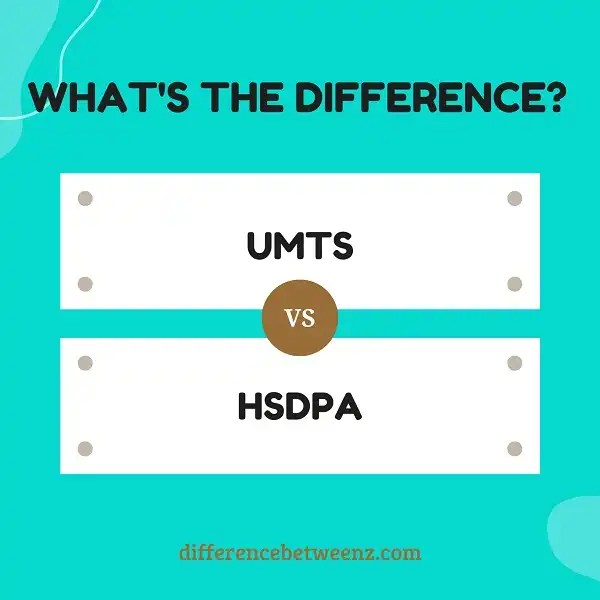UMTS and HSDPA are both types of mobile broadband technologies used to provide high-speed internet access. UMTS is a third-generation technology that offers speeds up to 384 kbps, while HSDPA is a fourth-generation technology that can offer speeds up to 14 Mbps. While both technologies are widely used, HSDPA is the faster and more advanced of the two.
What is UMTS?
UMTS (Universal Mobile Telecommunications System) is a third-generation mobile cellular system for networks based on the GSM standard. UMTS uses wideband code division multiple access (W-CDMA) radio access technology to offer greater capacity than older versions of mobile phone networks. UMTS provides a consistent set of services to mobile computer and phone users, no matter where they are located or which operator provides their service. UMTS supports voice calls and data transfer at data rates up to 2 Mbps.
It offers increased capacity and speed by using a wider frequency bandwidth than its predecessor systems. UMTS also supports circuit-switched data (CSD), packet-switched data (PSD), high-speed downlink packet access (HSDPA), and enhanced uplink (EUL). All of these features allow UMTS to provide high-speed mobile Internet access and other data services.
What is HSDPA?
HSDPA is a high-speed data packet access technology used in UMTS networks. HSDPA provides significantly higher data rates, up to 14Mbps, and reduced latency compared to standard UMTS data services. HSDPA is an evolutionary step towards HSPA (High-Speed Packet Access), which is a set of technologies that includes HSDPA and HSUPA (High-Speed Uplink Packet Access).
HSPA provides peak data rates of up to 28Mbps for downlink and 11Mbps for uplink. HSPA+ is an enhancement of HSPA that supports even higher data rates, up to 42Mbps for downlink and 23Mbps for uplink. HSPA+ is sometimes referred to as HSPA Evolution or Evolved HSPA.
Difference between UMTS and HSDPA
UMTS (Universal Mobile Telecommunications System) is a third-generation mobile phone standard, while HSDPA (High-Speed Downlink Packet Access) is an enhancement to UMTS that offers higher data speeds. UMTS is based on the GSM standard and uses WCDMA (Wideband Code Division Multiple Access) technologies to provide increased capacity and data rates.
HSDPA provides even higher data rates by using advanced modulation and coding techniques. Because of its higher data rates, HSDPA is sometimes referred to as “3.5G” while UMTS is referred to as “3G”. Despite the higher data rates offered by HSDPA, both UMTS and HSDPA are cellular networks and therefore have similar coverage areas. UMTS and HSDPA are not compatible with each other, but both are backward compatible with GSM.
Conclusion
UMTS and HSDPA are both 3G mobile technologies. UMTS is the older technology, while HSDPA is an update to UMTS that increases data speeds. The two technologies are not compatible with each other, so if you have a phone that uses UMTS, it will not work with a network that uses HSDPA.


